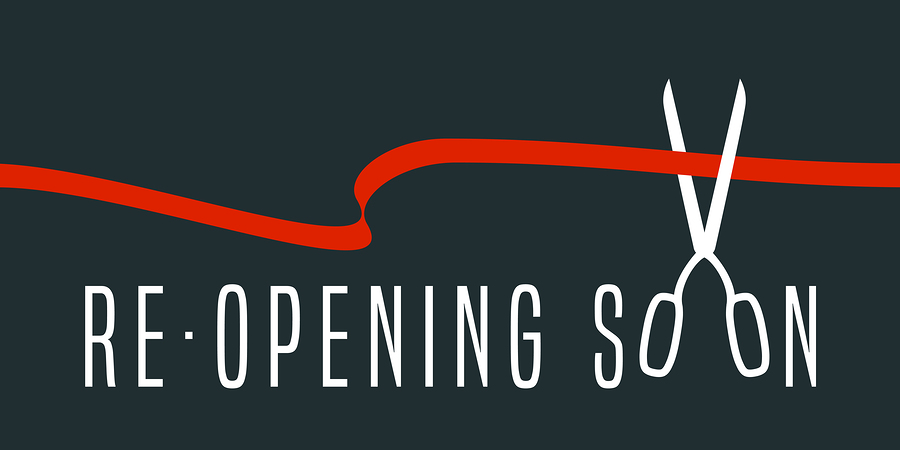

Seller Financing: It Makes Dollars and Sense


When contemplating the sale of a business, an important option to consider is seller financing. Many potential buyers don’t have the necessary capital or lender resources to pay cash. Even if they do, they are often reluctant to put such a hefty sum of cash into what, for them, is a new and untried venture.
Why the hesitation? The typical buyer feels that, if the business is really all that it’s “advertised” to be, it should pay for itself. Buyers often interpret the seller’s insistence on all cash as a lack of confidence–in the business, in the buyer’s chances to succeed, or both.
The buyer’s interpretation has some basis in fact. The primary reason sellers shy away from offering terms is their fear that the buyer will be unsuccessful. If the buyer should cease payments–for any reason–the seller would be forced either to take back the business or forfeit the balance of the note.
The seller who operates under the influence of this fear should take a hard look at the upside of seller financing. Statistics show that sellers receive a significantly higher purchase price if they decide to accept terms. On average, a seller who sells for all cash receives approximately 70 percent of the asking price. This adds up to approximately 16 percent difference on a business listed for $150,000, meaning that the seller who is willing to accept terms will receive approximately $24,000 more than the seller who is asking for all cash.
Even with these compelling reasons to accept terms, sellers may still be reluctant. Selling a business can be perceived as a once-in-a-lifetime opportunity to hit the cash jackpot. Therefore, it is important to note that seller financing has advantages that, in many instances, far outweigh the immediate satisfaction of cash-in-hand.
- Seller financing greatly increases the chances that the business will sell.
- The seller offering terms will command a much higher price.
- The interest on a seller-financed deal will add significantly to the actual selling price. (For example, a seller carry-back note at eight percent carried over nine years will double the amount carried. Over a nine-year period, $100,000 at eight percent will result in the seller receiving $200,000.)
- With interest rates currently the lowest in years, sellers can get a much higher rate from a buyer than they can get from any financial institution.
- The tax consequences of accepting terms can be much more advantageous than those of an all-cash sale.
- Financing the sale helps assure the success of both the sale and the business, since the buyer will perceive the offer of terms as a vote of confidence.
Obviously, there are no guarantees that the buyer will be successful in operating the business. However, it is well to note that, in most transactions, buyers are putting a substantial amount of personal cash on the line–in many cases, their entire capital. Although this investment doesn’t insure success, it does mean that the buyer will work hard to support such a commitment.
There are many ways to structure the seller-financed sale that make sense for both buyer and seller. Creative financing is an area where your business broker professional can be of help. He or she can recommend a variety of payment plans that, in many cases, can mean the difference between a successful transaction and one that is not. Serious sellers owe it to themselves to consider financing the sale. By lending a helping hand to buyers, they will, in most cases, be helping themselves as well.
The post Seller Financing: It Makes Dollars and Sense appeared first on Deal Studio – Automate, accelerate and elevate your deal making.


Negotiating the Price Gap Between Buyers and Sellers


Sellers generally desire all-cash transactions; however, oftentimes partial seller financing is necessary in typical middle market company transactions. Furthermore, sellers who demand all-cash deals typically receive a lower purchase price than they would have if the deal were structured differently.
Although buyers may be able to pay all-cash at closing, they often want to structure a deal where the seller has left some portion of the price on the table, either in the form of a note or an earnout. Deferring some of the owner’s remuneration from the transaction will provide leverage in the event that the owner has misrepresented the business. An earnout is a mechanism to provide payment based on future performance. Acquirers like to suggest that, if the business is as it is represented, there should be no problem with this type of payout. The owner’s retort is that he or she knows the business is sound under his or her management but does not know whether the buyer will be as successful in operating the business.
Moreover, the owner has taken the business risk while owning the business; why would he or she continue to be at risk with someone else at the helm? Nevertheless, there are circumstances in which an earnout can be quite useful in recognizing full value and consummating a transaction. For example, suppose that a company had spent three years and vast sums developing a new product and had just launched the product at the time of a sale. A certain value could be arrived at for the current business, and an earnout could be structured to compensate the owner for the effort and expense of developing the new product if and when the sales of the new product materialize. Under this scenario, everyone wins.
The terms of the deal are extremely important to both parties involved in the transaction. Many times the buyers and sellers, and their advisors, are in agreement with all the terms of the transaction, except for the price. Although the variance on price may seem to be a “deal killer,” the price gap can often be resolved so that both parties can move forward to complete the transaction.
Listed below are some suggestions on how to bridge the price gap:
- If the real estate was originally included in the deal, the seller may choose to rent the premise to the acquirer rather than sell it outright. This will decrease the price of the transaction by the value of the real estate. The buyer might also choose to pay higher rent in order to decrease the “goodwill” portion of the sale. The seller may choose to retain the title to certain machinery and equipment and lease it back to the buyer.
- The purchaser can acquire less than 100% of the company initially and have the option to buy the remaining interest in the future. For example, a buyer could purchase 70% of the seller’s stock with an option to acquire an additional 10% a year for three years based on a predetermined formula. The seller will enjoy 30% of the profits plus a multiple of the earnings at the end of the period. The buyer will be able to complete the transaction in a two-step process, making the purchase easier to accomplish. The seller may also have a “put” which will force the buyer to purchase the remaining 30% at some future date.
- A subsidiary can be created for the fastest growing portion of the business being acquired. The buyer and seller can then share 50/50 in the part of the business that was “spun-off” until the original transaction is paid off.
- A royalty can be structured based on revenue, gross margins, EBIT, or EBITDA. This is usually easier to structure than an earnout.
- Certain assets, such as automobiles or non-business-related real estate, can be carved out of the sale to reduce the actual purchase price.
Although the above suggestions will not solve all of the pricing gap problems, they may lead the participants in the necessary direction to resolve them. The ability to structure successful transactions that satisfy both buyer and seller requires an immense amount of time, skill, experience, and most of all – imagination.
The post Negotiating the Price Gap Between Buyers and Sellers appeared first on Deal Studio – Automate, accelerate and elevate your deal making.


Getting Back to Business After the COVID-19 Pandemic
Historians have long known the historical relevance and impact of epidemics and pandemics. Despite our various technological advances and the complexity of our society, disease can instantly change the course of history. Not having a robust global system for dealing with disease and pandemics comes with a hefty price tag. In the case of the COVID-19 economic crisis, the price tag will no doubt be in the trillions.
You can’t control what has happened, but you can focus on what to do when the pandemic is over and life begins to slowly return to normal. In his recent article, “How to Hit the Ground Running After the Pandemic,” author Geoffrey James explores what businesses need to do to jumpstart their operations once the pandemic is in the history books.
James wants his readers to understand that the pandemic will end and that business owners need to be ready to charge back in when the pandemic is over and the economy rebounds. As James points out, if history is any indicator, the economy will eventually rebound.
Almost everything about this economic downturn is unique. Take, for example, the fact that the U.S. has just seen its largest-ever economic expansion. The gears and wheels of the economy were spinning along quite quickly before the pandemic hit. This could help restart the economy faster than in past severe economic downturns. In short, many experts feel that this particular economic downturn could be short, but of course, this is speculation. There is no way to know for sure until COVID-19 is in the rearview mirror.
James correctly asserts that businesses need to put together a plan for how they will get up and running as soon as the pandemic is over. His recommendation is to divide your plan and thinking into four distinct categories: Facilities, Personnel, Manufacturing, and Marketing.
Each of these categories has three key questions that business owners should be asking themselves so that their businesses are ready to hit the ground running when COVID-19 is over. Below are a few of the key questions James recommends asking.
- How can we create the most sanitary and disease-free workplace possible?
- Which employees will continue to work from home?
- When there’s a spike in demand, how will we ramp-up?
- What will be our “We’re Back!” marketing message?
The pandemic caught everyone except the experts off guard. Moving forward, business leaders, think tanks, and politicians alike need to work to develop and implement robust plans to minimize the damage caused by pandemics. Humanity, and business, has been “lucky” several times in recent years, as we dodged bullets ranging from Ebola to SARS.
As James points out in his article, “Failing to plan is planning to fail.” Businesses need to plan for the recovery and they need to plan for another pandemic because another one is quite possible especially if better planning and decision making are not firmly entrenched in place.
Copyright: Business Brokerage Press, Inc.
The post Getting Back to Business After the COVID-19 Pandemic appeared first on Deal Studio – Automate, accelerate and elevate your deal making.


COVID-19 Advice for Hospitality Businesses


Clearly, some industries are taking a bigger hit from COVID-19 than others. Any industry that requires a great deal of interaction with the public, or where people gather in large groups, are obviously having very tough times. Movie theaters and restaurants, for example, have essentially gone dark. Some restaurants are easing the bloodletting a bit by providing delivery, but in the vast majority of cases, revenue pales in comparison to what it was prior to the pandemic.
While there is no doubt that the hospitality industry is suffering right now, business owners should understand that there are concrete steps they can take now to improve their odds of surviving the pandemic. In this article, we’ll explore a few of these key ideas.
One of the areas every decision maker and business owner in the hospitality industry should be thinking about right now is staff. During a recent industry roundtable discussion, John Howe, chairman of the International Association of Business Intermediaries, pointed out that staffing problems will continue long after the pandemic has paused or is over. He believes that hospitality businesses will have a tough time getting the staff they need, especially in the short run.
His key piece of advice is to work to have a line on people for key positions. This will allow you to at least get back up and running with basic operations. While it may be a while before hospitality businesses are at “full steam,” it is critical that they are able to open up in some fashion, as this will translate into much needed revenue. Hospitality businesses looking to survive the pandemic should focus on making certain that key positions have been filled. In this way, the post-pandemic relaunch can be as smooth as possible.
Founder and President of Cornerstone Business Services, Scott Bushkie, explained that there are a lot of hospitality industry people out of work right now, and this represents a real opportunity. Now, is the perfect time to potentially upgrade staff. There are plenty of experienced and proven hospitality people looking for positions. The new people you bring may come with extra benefits such as bringing their customers, suppliers, and other relationships with them. For those in the hospitality industry who may have always wanted to upgrade their team, now is perhaps the best time in history to do so.
Employees are a foundational element of your business. Improving your staff means you’ve improved your business and boosted your odds of survival. Bringing in new team members can help you prepare for the post-pandemic business environment. It also offers up the potential for you to upgrade an important element within your business.
Copyright: Business Brokerage Press, Inc.
The post COVID-19 Advice for Hospitality Businesses appeared first on Deal Studio – Automate, accelerate and elevate your deal making.


How to Make Remote Teams Accountable


One of the many, many changes that COVID-19 has ushered in is the extreme uptick in people working remotely. Social distancing has made working from home a necessity for millions.
The technology that is allowing remote working to take place has matured greatly in the last decade. Today, it is possible for team members to work from virtually any location. Of course, as with most technologies, there is a potential downside. Accountability can become a significant challenge with remote workers. Of course, the more remote workers you have at a given time, the greater the potential challenges will be.
Many businesses are struggling with the phenomenon of remote working, as it is something new for them. Under normal circumstances, large numbers of employees working remotely simply wouldn’t happen. In a recent article, “The Right Way to Keep Your Remote Team Accountable,” author Elise Keith, Co-Founder and CEO of Lucid Meetings, explores the key steps businesses should take to help ensure that their employees stay on target while working from home.
Table of Contents:
Starting Slow
Keith believes that for remote working to be effective that there are 4 major mistakes that should be avoided. One of the biggest mistakes that employers, especially those unfamiliar with remote work, make is that they demand too much productivity right out of the gate.
She points out that remote teams can, in fact, be very productive and even outperform their in-office counterparts. Summed up another way, remote work can be extremely productive. Keith’s perspective is that businesses should “identify the highest priority tasks right now and relax the rest.” Business owners need to remember that they are not the only ones under stress. The simple and undeniable fact is that your employees are feeling the stress of COVID-19 as well.
Getting Good at Working Remotely
The second major mistake she points to is that people are assuming the current pandemic situation is temporary. Other crises will occur in the future, and it makes sense to be prepared. As she phrases it, why not “get good at working remotely?” Teams with good remote working skills are proving to be rather resilient right now.
Being Open to Technology
A third mistake she points out is businesses shouldn’t disallow the use of non-approved tools. In short, now is not the time to worry too much about what software tools people are using. Instead, she suggests creating an expedited process for the adoption of new tools. If your team finds a new tool that boosts productivity, you should consider buying it.
She astutely points out, “Software costs pale when compared to the costs of lost opportunity.” At the heart of this point is the fact that now, more than any time in decades, is the time to set aside restrictive thinking and become more open-minded and flexible. After all, your number one goal, and the number one goal of your clients, is to stay in business until the pandemic has passed.
Staying Flexible
Keith’s fourth mistake centers on management’s design to dictate hours and response times. Remote work is, by its nature, going to be more flexible. Trying to micromanage every move digitally is simply not a savvy move and will hurt morale.
Instead, she feels businesses should opt for having a daily meeting via phone or videoconference with the team. Additionally, she puts forth the idea of having a one-on-one meeting with every team member as well.
For many businesses and many situations, remote work may be the “only game in town.” Trying to carry on business as usual is only going to cause headaches for everyone. Remote work can be highly effective for you, especially when used correctly.
Copyright: Business Brokerage Press, Inc.
The post How to Make Remote Teams Accountable appeared first on Deal Studio – Automate, accelerate and elevate your deal making.


Now is the Time for Focus


As of late April 2020, there is one thought at the forefront of the vast majority of businesses around the globe, namely, what steps do I need to take to stay in business until the COVID-19 pandemic is over or recedes? There is no doubt about it, this is the “big question” of the day.
The global economic structure hasn’t seen this much uncertainty since WWII, and some would argue that we’ve never seen this level of simultaneous global economic disruption. Knowing what steps you need to take to keep your business up and running is of paramount importance.
In short, business owners must be sure that their businesses are in good shape. You should take every step possible to position yourself for when the economy is back up and running at full steam. Right now, there is a degree of chaos and uncertainty, but this will not last. As a business owner, you need to focus on getting your house in order.
Now is not a time to take a vacation. Instead, you should be focused like never before on the inner workings of your business. You should be striving to find ways to improve every single aspect. Of course, this is easier said than done. There is a real psychological hurdle, as for many people it seems as though everything has “stopped.” While customers, clients, and staff interactions have been dramatically reduced, now is not the time for you to “check out” mentally and wait for things to get better.
Rarely, if ever, has it been more important for owners to invest as much of their time and energy as possible. After all, as a business owner, you have already shown a great deal of drive and determination, as well as at least some level of out of the box thinking. You have proven that you have what it takes to get through the recent challenges.
Many will feel dejected right now. But you should pool on the same skill sets that allowed you to create a successful business in the first place. What obstacles did you overcome in life to create your business? Was your business created during a prior economic downturn? The odds are that you already have skill sets and strengths that will allow you to survive the fallout of COVID-19.
For business owners who truly want to survive the economic stress of the pandemic, ultimately, focus is key to survival. The odds are excellent that there are revenue streams and different approaches that may have been overlooked. Your job is to identify and then exploit those avenues.
Copyright: Business Brokerage Press, Inc.
The post Now is the Time for Focus appeared first on Deal Studio – Automate, accelerate and elevate your deal making.


Questions for Helping Businesses Survive the COVID


Developing Your 90-Day Plan
Those who want to make sure their businesses survive this pandemic will want to achieve a laser-like focus. It is important to realize that the forced downtime triggered by the pandemic affords you the opportunity to work on potentially neglected aspects of your business.
Summed up another way, now is the time for dynamic and focused action. In this article, we’ll address what you can do to help your business survive this unusual time period.
Reevaluating Your Business
It’s time to step back and look at every aspect of your business, including your processes. You should be encouraged to find new ways of doing things. In short, now should be viewed as a time of opportunity to reboot your business. That way when the pandemic has subsided, and your business picks up once more, it is more efficient, more effective, and more competitive.
Scott Bushkie, Founder and President of Cornerstone Business Services, recommended that business owners create 90-day plans where they look for ways to innovate. This strategic plan should focus on what they are going to do and what they want to accomplish. It is critical that there is an actual plan that achieves tangible results and not simply a list of things that should be accomplished. Listed below are a few questions you should be pondering.
- How can I outperform the competition?
- How can I innovate?
- How can I increase my use of technology?
- How can I deliver my products and services in a different way?
- How can I reduce my operational costs?
- Have I reached out to my suppliers and creditors for assistance?
- Have I applied to applicable SBA COVID-19 focused programs?
- What do I want to accomplish in the next 90-days?
It’s Time to Reboot
The main point is that businesses should not look at this pandemic situation as some sort of “miserable and stressful vacation,” but instead as an opportunity to reboot what is not working, and look for ways to make improvements in every aspect of your business. This process begins by asking the right questions and striving to find the answers.
In answering these questions and finding ways to help boost your rates of survival, you should turn to every asset at your disposal. Why not ask your management team as well as all of your employees for ideas that could help their business? Everyone should understand that owners are looking for ways to keep their business healthy while navigating the pandemic.
Now is the time for reflection, short-term and long-term planning, and tangible actions. Business owners should also consult with a range of business professionals, including, of course, business brokers and M&A Advisors. Brokers are uniquely positioned to help business owners through this crisis.
Copyright: Business Brokerage Press, Inc.
The post Questions for Helping Businesses Survive the COVID appeared first on Deal Studio – Automate, accelerate and elevate your deal making.


Great Tips for Selling Your Business


It takes preparation and focus to sell most businesses. The reality of the situation is that it can take years to achieve this goal. Partnering with a business broker or M&A Advisor is a smart step towards selling any business, as these pros know the very best tips. In that spirit, let’s take a look at some great tips for selling your business.
Getting your business ready to sell means carefully evaluating the foundation. Any significant problem can send buyers “running for the hills,” so be sure that you work out any problems well before placing your business on the market. If you have any litigation or environmental issues, you most definitely want to address those issues before it is time to sell. Nothing will scare away prospective buyers quicker than pending litigation or the specter of a potentially costly environmental clean-up.
A second key issue you’ll want to address is determining who exactly has the legal authority to sell the business. Suppose a board of directors or majority stockholder situation is in place. In that case, selling a business can become more complex than it would be if you were dealing with a sole proprietorship or partnership. Again, the last thing you want is for “legal surprises” to occur when you get ready to sell a business.
If you have non-negotiable items, be certain that those items are discussed upfront. Revealing your non-negotiable items at the very beginning of negotiations will save everyone involved a great deal of trouble.
Tip three involves maintaining a flexible mindset. In most circumstances, you simply can’t have everything that you want. Both buyers and sellers need to be flexible. Sellers will want to be flexible about any real estate. Buyers may not want real estate associated with a given business, and you need to be prepared for this. Sellers should also be prepared to accept valuation multiples for lack of management depth and other factors, such as reliance on a small number of customers.
At the end of the day, sellers should partner with experienced professionals such as attorneys and business brokers. You’ve put a lot of time, energy and resources into building your business. When it comes time to sell, it is only prudent to put together the best team in order to achieve optimal results.


It’s Time to Exit. Are you Ready?


Thinking about whether or not you are ready to exit is an important question. It’s something that every business owner will have to address at some point. Importantly, you don’t want to wait until the 11th hour to prepare to sell your business. There are far too many pieces in this particular puzzle to wait until the last minute. You’ll want to begin the process sooner by asking yourself some key questions.
Determining Value
First, you’ll need to determine the actual value of your business. It is a harsh truth, but what you think your business is worth and what the market feels that it is worth may be two very different things.
This point serves to underscore the importance of working with a business broker or M&A advisor early in the process. An experienced broker knows how to go about determining a price that will generate interest and seem fair. Remember that at the end of the day, it will be the marketplace that determines the value of your business, but working with a seasoned professional is an excellent way to match your offering price with what the market will ultimately bear.
Going Within
Secondly, you’ll want to consider whether or not you truly want to sell. It is not uncommon for business owners to begin the process of selling their business only to realize a few hard facts. Wanting to sell and the time being right to sell are often two different things.
Upon placing your business on the market for sale, you may learn that you’re not emotionally or financially ready. If this happens to you, consider it a learning experience that will serve you well down the line.
Get Your Ducks in a Row
If you have done a financial assessment, a little soul searching and have begun working with a business broker or M&A advisor to determine that now is a good time to sell your business, then there are several steps you’ll need to take. You can be sure that any serious prospective buyer will want a good deal of information regarding your company.
At the top of the list of items potential buyers will want to see are three years of profit and loss statements as well as federal income tax returns for the business. Other important documents ranging from lease and lease related documents, lists of loans against the business and a copy of a franchise agreement, when applicable, are all additional documents that you will need to provide. You should also have a list of fixtures and equipment, copies of equipment leases, lists of fixtures and equipment, and an approximate amount of inventory on hand. A failure to not have this information organized and ready to present at a moment’s notice could be a costly mistake.
Working with professionals, such as accountants, lawyers, and brokers, is a savvy move. Owning and operating a business can be a complex process, and the same holds true for selling a business. Investing the time to seek out experienced and professional advice is the first step in selling your business.


What You Need to Know About the Golden Age of Business Acquisitions


Business acquisitions are red hot, and all kinds of businesses are being snapped up. Some people are under the impression that only large businesses are being acquired, but this is far from the reality of the situation. It would surprise many to learn that so much of the “action” is, in fact, small businesses buying other small businesses.
In his Forbes article, “Take Advantage of the Golden Age of Business Acquisitions,” author Christopher Hurn explores the true state of the “acquisitions game.” His conclusions are quite interesting. In Hurn’s opinion, there has never been a more active time in the realm of business acquisitions.
If you own a business and are looking to grow, then you may want to consider acquiring a competitor in order to consolidate the market. As Hurn points out, there are many reasons that you might want to consider acquiring a business in addition to consolidating the market. These reasons include acquiring a new product or service, acquiring a competitor that has superior technology or even identifying a business that you believe is primed for substantial growth.
Yet, there are other forces at work that are combining to make this moment the “golden age of acquisitions.” At the top of the list of why now is a good time to investigate acquiring a business is demographics. According to a 2019 study by Guidant Financial and Lending Club, a whopping 57% of small business owners are over the age of 50. The California Association of Business Brokers has concluded that over the next 20 years about $10 trillion worth of assets will change hands. A mind-blowing 12 million businesses could come under new ownership in just the next two decades! As Hurn phrased it, “The stars are aligning for the Golden Age of business acquisitions.”
This all points to the fact that now is the time to begin understanding what kind of acquisition would best help your business grow. Hurn believes that turning to the Small Business Administration in this climate of rapid acquisition is a savvy move.
In particular, he points to the 7(a) program and a host of reasons that the SBA can benefit small businesses. Since the SBA lowered equity injection requirements, it is now possible to finance a staggering 90% of business acquisition deals with loan terms up to 25 years and lower monthly payments. Additionally, the SBA 7(a) program can be used for a variety of purposes ranging from expanding or purchasing an existing business to refinancing existing business debt.
Hurn truly does have an important insight. Baby Boomers will retire by the millions, and most of them will be looking to sell their businesses. With 12 million businesses scheduled to change hands in just the next 20 years, now is a highly unique time not only in the history of acquisitions but also in the history of business.
Business brokers understand what is involved in working with the SBA and acquisitions. A seasoned business broker can point you towards opportunities that you may have never realized existed.


